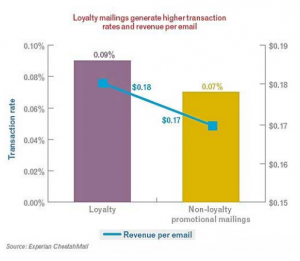
Remember the hit series Mad Men? The television drama focused on the personal foibles of marketing executives on Madison Avenue, but there was also plenty of insight into the marketing strategies used by companies in the mid-1900s.
While the types of marketing strategies we use to snag customer attention may have changed through the years, the goal has not. Marketing is still about finding the best way to get customers interested in our products. What has changed is how we go about doing this.
Thinking outside the box and other great talents
The successful marketer today is much like the polished professional of Madison Avenue in the 1960s in one way: creativity creates opportunity in marketing. Today’s marketers are encouraged to “think outside the box” and find new ways to engage consumers. The ability to do this is the hallmark of a great strategist and will result in successful ad campaigns.
What is different today is that marketers are no longer plugged into a single role. Today’s marketers now must possess a distinctive blend of coding and marketing skills as well as creativity. There is no single, isolated roles for the successful marketer in today’s world.
This brings us to growth hacking.
What is growth hacking?
Growth hacking is the process of experimenting across multiple marketing channels rapidly and simultaneously to identify the most successful ways to grow businesses.
Growth hackers must take on the roles of marketers as well as engineers who grow businesses, product managers who brand products and advertisers who engage customer bases and perform research to identify potential marketing areas.
It’s not Don Draper’s marketing.
Why is growth hacking important to my business?
If you are not considering the roles involved in growth hacking, it is likely that your marketing is falling behind the curve. Your competitors are certainly considering the ramifications of the various aspects of growth hacking, so it is important that you do so as well.
Here are some questions you might want to ask yourself when considering whether your business will benefit from a growth hacking stance in marketing:
- Do I know the various marketing channels through which my business should be operating?
- Do I have someone on my team who can successfully handle the technical aspects of my website?
- Am I using every strategy available, including social media, on a regular basis?
- Who is branding my products?
- What is my plan for growth over the next six months, year and five years?
Let’s take these questions one at a time.
Do you know your marketing channels?
It is not uncommon for business owners to be unaware of the marketing channels through which they should be pushing their products. In fact, it is probably more common than not that business owners focus on one or two marketing channels through which they have had success in the past and ignore others.
According to a recent UMass study, “the value of a marketing channel, one of a firm’s market-based assets, is determined not only by the amount of value created during the distribution process, but also by the ultimate value appropriated by the firm.”
What this means in simple terms is that marketing channels have value far beyond the “bottom line” figure of profit that they generate for their users. Things like branding and good will development happen in marketing channels, so focusing only on the actions that bring in the most dollars can be a serious mistake. In the long run, developing multiple marketing channels gives you a way to reach your customers and keep them happy with your products.
Additionally, having multiple marketing channels is a safety net. It allows you to shore up weak areas or weather lean times when one channel does not bring in the profit you anticipated.
How is your tech looking?
Technical support is crucial for today’s marketing strategies. Find someone good and keep that person, whatever the cost. Treat him or her as one of the most valuable members of your team.
Too many people farm out technical work to the cheapest bidder. This is a recipe for eventual disaster with your customers. Not only are today’s customers better at using technology than they were a few years ago, but there has also been a significant paradigm shift in what constitutes “good” technical service. If your website doesn’t work, you will lose customers. It is that simple.
When you’ve hired a good developer have them use Google Search Console and Google Insights to learn what improvements Google suggests for your website.

Do you have a solid SEO plan?
Ranking in search engines such as Google, Yahoo! and Bing for example can bring in a number of leads to your business. Getting started isn’t rocket science but it is highly recommend that you consult with a consultant to map out your strategy.
Joining groups on LinkedIn, Facebook groups, and Forums are another good resource where you can ask questions and network with like-minded individuals.
What about social media?
Social media is the elephant in the room for many companies. You need someone managing your social media on a consistent and regular basis. It is not optional; every successful company today has a strong social media presence.
You cannot buy better branding than a good social media campaign, particularly if your potential customers are young or congregate in a certain spot on the Internet.
On the other hand, a bad social media strategy can be the kiss of death. If you do not know what you are doing with social media, hire an expert. Companies have been taken down by the wrong person writing social media posts and interacting with customers; you are better off avoiding social media altogether than using it incorrectly.
Who is branding whom?
If you are not branding your products, your competitors are. It is that simple. We no longer live in a world where it is enough to run your own successful marketing; you must also secure your brand against attack by anyone who chooses to publish negative information about you.
How can you do this? The simplest way is to monitor your branding at all times and take pro-active steps to ensure that you are placing positive images in your customers’ minds. Be sure to focus on both current and future potential customers.
In addition to creating positive marketing around your brand name you will also want to monitor the internet to make sure that there isn’t anything negative said about your company. One of the tools you can use to do this is called Google Alerts. Google Alerts is a free tool offered by Google that will alert you anytime they find keywords, names, or phrases you enter on the internet.
To sign up you will need to have a Google account. After you sign in it’s as easy as entering your brand name into a text box then clicking a blue “Create Alert” button. After that Google will send you an email when they come across your brand name mention.

Do you have a plan?
Good marketing doesn’t happen by accident. It is the product of a six-month, year, five-year and beyond plan for growth. Be sure you have concrete, measurable goals to compare to your actual results.
The metrics you use to measure success can vary based on your goals. Below are a few measures I like to use.
- Organic rankings in search engines like Google and Bing are good measures for anyone who is looking to increase website traffic. Moving from position 10 to position 1 or 2 can make a large increase in the number of visitors seeing your listing in search engine results and then clicking through to your website. According to findings from online ad network Chitika, the top result on Google gets about 33% of the traffic compared to 18% for the second position.
- Number of visitors to your website and from where. When you see an increase in traffic you’ll want to know where it came from. The same goes with sudden decreases in traffic. If you notice any dips in traffic you will want to find out if there is a particular source that is no longer performing and investigate.
- Bounce rate is an important metric to keep an eye on. If you have a high bounce rate you will want to make sure that (A) you are driving traffic to your page or site that is relevant and (B) your pages address what your visitors are looking for. The best way to do this is to head over to Qualaroo and set up a survey on your site asking people why they are leaving.

- Conversion rate is an important element that many websites overlook. There are many types of conversion rates, which include landing page conversions, email conversions, etc. To help improve conversion rates it is a good idea to always be testing elements on your website. If you are currently using Google Analytics, testing is free using the experiments link. Setup is rather easy. Simply click on the “Create Experiment” button and follow a few simple steps to get up and running.

- Goal progress is an important part of any campaign. Each goal set should be SMART and prioritized. SMART goals are specific, measureable, attainable, realistic, and timely.
Growth hacking is a powerful tool if used correctly. Harness the power of growth hacking, and your company can grow beyond your wildest dreams!
Business & Finance Articles on Business 2 Community(70)







